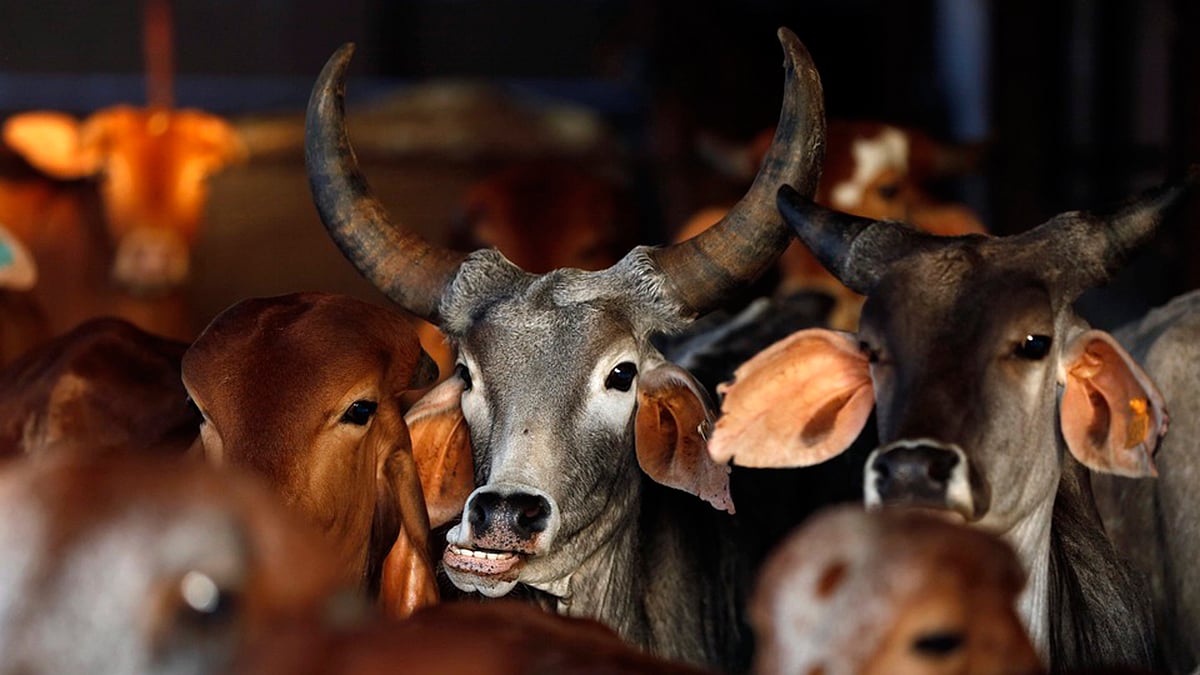Beef Politics: How Beef Was Consumed in Ancient Tamil Nadu
Beef in Tamizhagam: How was cow slaughtered and beef consumed in ancient Tamil Nadu?

advertisement
Drawing from his popular and controversial book ‘The Myth of the Holy Cow’ DN Jha has written in the Indian Express on the ‘elusive’ holiness of the cow. While cow-slaughter was a common trend in the Vedic times, by the medieval era, “the cow was emerging as an emotive cultural symbol in brahminical circles” and thereafter became an emotive issue, says Jha. But his narrative, through which he concludes that “the story of the cow is riddled with puzzles and paradoxes”, is largely based on ‘Aryan’ texts and the social, political and religious developments of north India.
What about the land of the Dravidians, how was beef consumed here during, say, the Sangam era?
An interesting paper published by KV Ramakrishna Rao at the 57th session of the Indian History Congress held at Madras from December 27-29, 1996, throws some light on the beef eating practice in ancient Tamizhagam. You can read the whole paper on Rao’s blog.
References in Sangam Literature
Here are some important pointers from Rao’s paper. The text below has either been duplicated from the research paper or paraphrased for an easier read.
There are several references to the consumption of beef in Sangam literature. While more emphasis was placed on vegetarian food, there wasn’t much differentiation between vegetarian and non-vegetarian food, perhaps proving that there were no religious restrictions on dietary habits.
Several words have been used in the literature to denote meat of different varieties. Some of the words used are - Un (meat), Thu, Thasai (flesh), Thadi, Ninam (fat), Pulal (dried meat with smell/dried salt-fish), Vidakkudai, Muri (removed flesh).
There are specific references found in Sangam literature about beef-eating, drawn from various sources.
Mazhavar, a community during the Sangam era, ate the flesh of a fatty cow in the palai (desert) region. The place where Mazavar killed a calf and ate its flesh was filled with the bad smell (pulal visum) of meat, again in the palai region.
A fatty cow was sacrificed at the bottom of a neem tree where a God resided, its blood sprinkled and then its flesh cooked by the Mazhavar – Vetch virar – warriors who captured cows during their raids from the depradators – Karandai, again in the palai region.
A Panan (member of Panar community), with the instrument “Tannumai” killed a calf, stripped off and ate its flesh, in the marudha region. As the instrument is mentioned along with his act of killing a calf, it may be implied that the leather used for it might be that of a calf. Therefore, from the above references, Mazhavar, Aalai kalvar, Panar resorted to beef-eating.
Organised Cow Killing
Was there any organised cow killing during the Sangam period for beef-eating, with abattoirs? The answer is definitely no, as we do not come across breeding of cows, capturing cows of others, buying cows from others for the purpose, milking till they last and then killing for beef and leather.
Though, P. T. Srinivasa Iyengar discussed “Brahmans” eating meat quoting Kapilar, he was silent about his reference about rice-eating. Kapilar addresses a Chera king, “Your hands have become hard due to warfare and giving alms to poets, whereas, the hands of poets have become soft, as they used to sing about you and eat smelling meat, seasonings of food, curry and boiled with rice with meat”.
Again, at another place, when he leaves Parambunadu, he praises it, “You used to provide us opened jars filled with liquor, slayed rams, boiled rice and curry with friendship. Now, as Pari was dead, I am going away from you...”
Taking these references, Iyengar interprets that Kapilar himself as desiring them as reward of his poems. However, none has pointed out significantly that they ate beef also.
The famous and favourable argument put forward by some scholars is that the meat/beef-eating Brahmans suddenly stopped doing so to promote cow-protection and project themselves as superior to ahimsa-preaching Jains, or that they had to fight the atheistic Jains and that while Buddhists were preaching and practicing non-violence, they should and could not have been so cruel to meat/beef eating.
As far as Tamizhagam is concerned, the argument that “Brahmans/Brahmins” ate beef or stopped beef eating to browbeat Jains and Buddhists in their maneuvers has no basis at all, as nothing is mentioned in the Sangam literature.
Author’s Conclusions
- Sangam society as depicted in the Sangam literature adapted and adopted mixed food habit
- Beef-eating was prevalent in the Sangam period without any religious compulsion or restriction
- Aralai kalver/Mazhavar/Panar etc., ate beef. Some of the Parppar might have eaten meat, but not beef, and such Parppar did not belong to priestly class or engaged in the performance of yagnas.
- Yagnas were performed, but no cow, horse or any animal was sacrificed.
- Mostly goat and cock were sacrificed during veriyadal and other occasions and cow in few occasions to please nature, but such sacrificial rites cannot be considered yagnas.
Chronologically, nothing could be specifically mentioned about the starting and introduction of beef-eating in the Tamizhagam based on the evidence of religion and theology.
(Ramanathan S works with The News Minute. The article has been edited for length.)